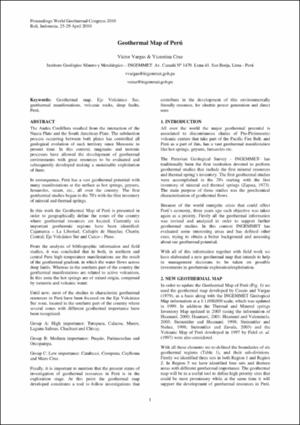Por favor, use este identificador para citar o enlazar este ítem:
https://hdl.handle.net/20.500.12544/2079Ficheros en este ítem:
| Fichero | Descripción | Tamaño | Formato | |
|---|---|---|---|---|
| Vargas-Geothermal_map_of_Perú.pdf | Artículo presentado a congreso | 2.08 MB | Adobe PDF | Visualizar/Abrir |
Este ítem está sujeto a una licencia Creative Commons Licencia Creative Commons












